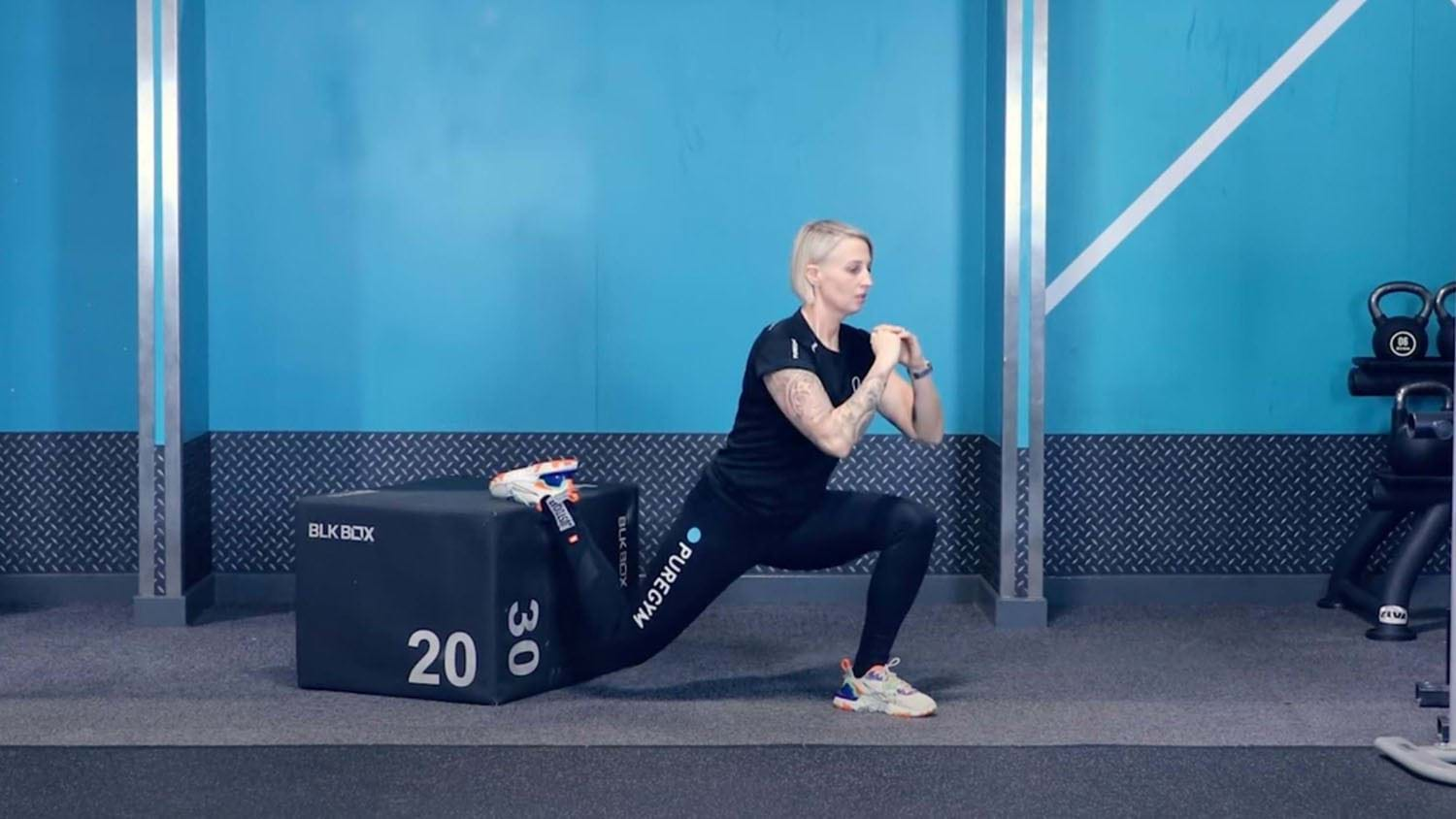Bulgarian Split Squats
What Are Bulgarian Split Squats?

The Bulgarian split squat is a unilateral squat variation that a similar movement pattern to the conventional split squat, but the rear leg is elevated on a box, bench, or step. This reduces the involvement from the rear leg and means the front leg and core must work harder to keep the body stable. This exercise requires a good level of balance, coordination, and lower body strength, and challenges the glutes, quads, calves, and hamstrings.
Bulgarian split squats can be carried out as a bodyweight exercise, or with the addition of dumbbells, kettlebells, sandbags, and barbells to add load. In addition to building strength and muscle in the legs, doing this exercise will help to improve other lower body movements such as lunges and squats.
Check out some other squat variations: overhead squats, prisoner squats, pulse squats, tempo squats, landmine squats,
Commonly Asked Questions On Bulgarian Split Squats
Bulgarian split squats target the muscles of the lower body including the glutes, hamstrings, calves, and quads. This exercise also challenges your stability and coordination which works the core muscles.
A compound exercise is defined as an exercise which engages multiple joints. The Bulgarian split squat engages both the knees and hips, making it a compound movement.
Greater overall lower body strength helps the body to produce more force when running and can increase speed.
Bulgarian split squats build lower body strength and can help with strengthening the glutes, hamstrings, quads, and calves, all muscles which contribute to running. This makes it an excellent exercise as part of a strength programme for runners who want to increase their pace.
Bulgarian Split Squat Tips
Ensuring the correct foot positioning can be challenging when it comes to performing the Bulgarian split squat. A wider stance will likely incorporate greater hip flexion, targeting the glutes and hamstrings more, while a narrower stance will target the quads more due to greater knee flexion.
Once you’ve found the most comfortable stance for you use a marker such as a resistance band to ensure you adopt the same stance when it’s time to work the other leg. If you’re struggling to balance as you set up the Bulgarian split squat, ensure to start with body weight before adding load or use a TRX to assist with stability.
How To Do Bulgarian Split Squats
Stand in front of a Pylo box or bench and raise one leg behind you and rest your foot laces down on the box or bench. If you prefer, rest on the ball of your foot instead. This can help with stability.
Stand at a distance from the box that allows both legs to be extended with a soft bend in the knee.
Choose a manageable weight that will allow you to lower your back knee close to the floor. Remember to opt for an equipment option suitable for your ability from a barbell or kettlebell to a TRX or bodyweight!
Take a deep breathe in before bending your front knee, stopping when it reaches 90 degrees and the knee behind is close to the floor. Keep your torso upright throughout.
From the bottom position, push through the entirety of your front foot to return to the starting position. Keep a soft bend in the legs as not to lock out the knees.
Perform all reps on your weaker leg first before swapping legs.
If you’re not sure if any of the above exercises are suitable for you, please consult your doctor before you start it. Need guidance on how to perform the exercise? Ask a personal trainer at your gym.